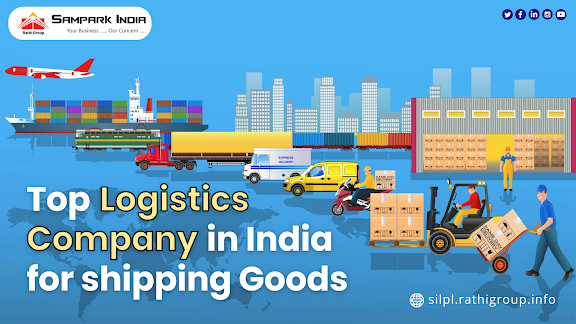How Can Logistics Companies Reduce Their Operations Cost?
Poor logistics planning and decision-making may result in excessive expenditure, missed delivery deadlines, and damaged goods. This being this case, optimizing operational efficiency and reducing logistics costs is among the highest priorities for any logistics service provider that strives to sustain his or her business during a cutthroat freight environment.
Want Logistics
Services? Visit the Best Logistics Company in India!
The challenge
Given today’s high customer demands and a fluctuating global
business climate, logistics managers face more challenges than ever before.
Cutting transportation costs makes the highest of the list, followed by:
·
Meeting
growing demands for on-time delivery.
·
Achieving
end-to-end visibility across the availability chain.
·
Achieving
client satisfaction (through adapted solutions and well-organized and
trustworthy services).
·
Following
compliance and emission reduction regulations enforced by authorities.
Moreover, staying on topmost of the latest advances in
business processes has become a collective challenge for logistics
administrators.
Consequently, a continuing commitment to driving down costs
is significant to survive during this hyper-competitive marketplace. To
succeed, LSPs must believe in smart logistics management practices.
The solution
The only thanks to reducing logistics costs and provide chain
expenditures is to utilize your resources in a better way. In other words, the
energy use throughout the end-to-end journey of freight must be lowered. You’ll
optimize the utilization of resources by:
·
Filling
trucks and other load units the maximum amount as possible, throughout the
chain.
·
Seeking
collaboration with other shippers (if your own volumes aren't sufficient to
fill load units).
·
Increasing
your volumes by cultivating customer happiness (using digital customer
experience feedback).
·
Increasing
volumes by providing enhanced visibility and transparency.
·
Using
digital information to extend productivity in hubs.
For logistics and transportation companies to realize this,
supply chain integration is vital. Hence, companies universally are turning to
cloud-based technologies for supply chain collaboration and interoperability.
This is often digital logistics.
Digital logistics – that's getting obviate paper processes
entirely, in order that all information exchange between logistics stakeholders
is electronic – enables LSPs to implement major strategic changes to supply
visibility, reduce costs and increase customer service levels.
SaaS solutions that run supply chains as open collaborative
networks double the use of trucks; enable a 50% emissions reduction and a
discount in freight costs of up to 35%. This provides companies a competitive
edge in the challenging T&L market.
By enabling the graceful collaboration of multiple shippers
of products and multiple logistics service providers, the SaaS model and mobile
applications can make the retail marketplace cost-efficient and carbon-friendly
for all involved.
Cargo from a good sort of shippers takes the foremost
efficient path to a given hub, where it's all consolidated into one delivery to
the top consumer.
A better cost structure
with the pay-as-you-go model
For many companies, adopting new technologies can appear to
be an awesome and dear undertaking. However, implementing SaaS solutions
requires low initial investments. You pay as you go. And you are doing not got
to replace or disrupt existing systems. Besides, the SaaS model means there are
not any equipment or IT management costs. No qualified IT teams are required to
manage the setup. Upgrades are free, coming online as they're ready for
implementation.
Conclusion
Up to half the value of the many supply chains is ignored and
unmanaged in outbound logistics and behind the closed doors of distribution
centers. Much of this cost is often eliminated by applying efficient supply
chain management techniques. The emergence of cloud-based solutions for supply chain
collaboration has made this considerably easier and cheaper than ever before –
so even small companies can cash in of it, without risk.
By ensuring that operational resources are used as
efficiently as possible, these new technologies meet logistics companies’
internal need for lower costs also as those of their customers, who also need a
low-cost, hassle-free, and on-time delivery service.




Comments
Post a Comment